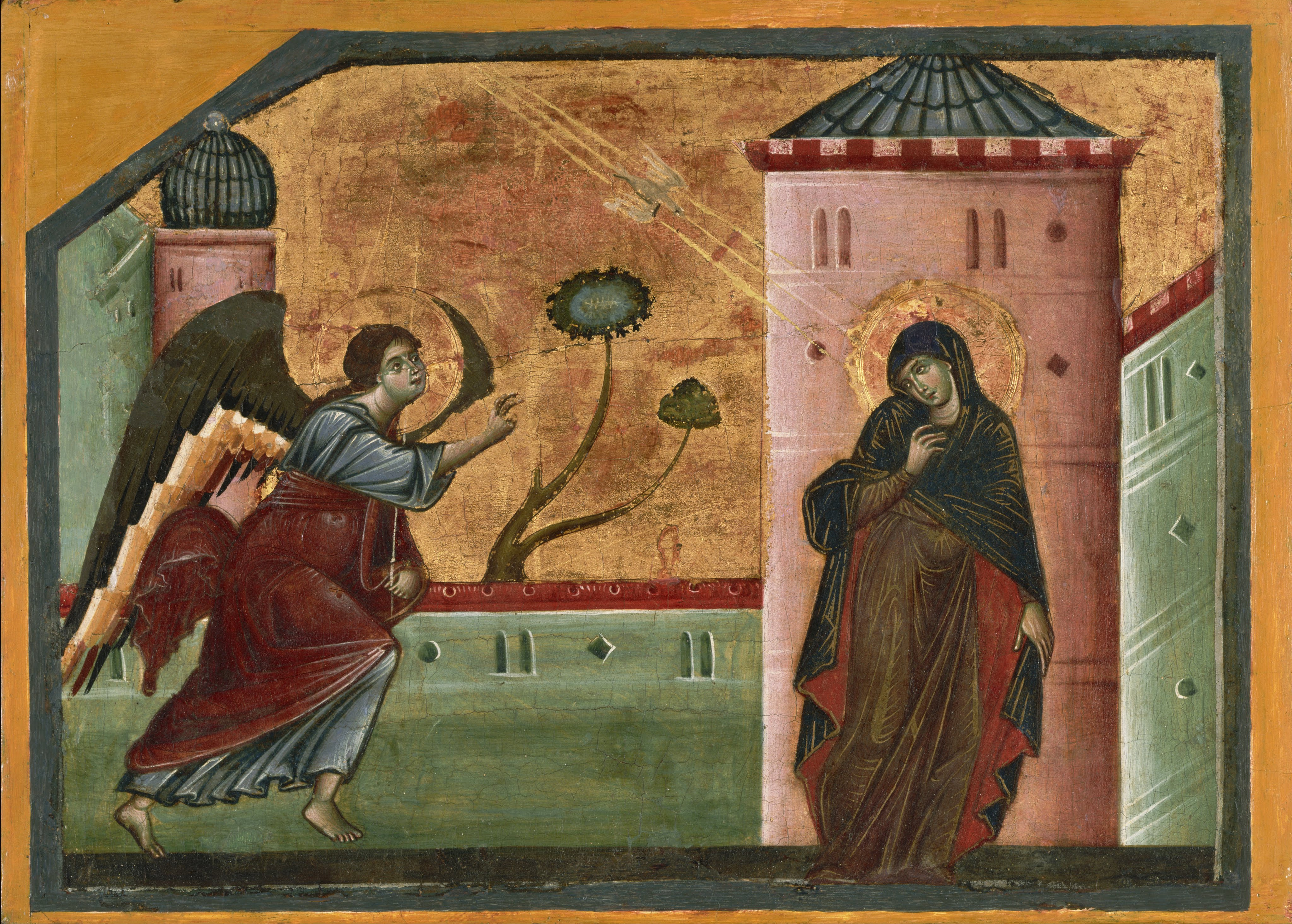You can find the most outstanding works of 13th century artist Pietro Cavallini right where he put them in the 13th century: in the churches of Rome (and elsewhere!). This Annunciation is in the splendid church of Santa Maria in Trastevere in the charming neighborhood "across the Tiber" where you care always sure to find a good meal, and where the Community of Sant' Egidio has their headquarters.
 |
| Annunciation, Pietro Cavallini; Church of Santa Maria in Trastevere (Rome) |



